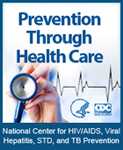National Black HIV/AIDS Awareness Day (Feb. 7)
Statement
Contact: National Center for HIV/AIDS, Viral Hepatitis, STD, and TB Prevention
(404) 639-8895
NCHHSTPMediaTeam@cdc.gov
“Ending the Black HIV/AIDS Epidemic in America”
Statement by Kevin A. Fenton, MD
Director, National Center for HIV/AIDS, Viral Hepatitis, STD, and TB Prevention
Centers for Disease Control and Prevention
On this National Black HIV/AIDS Awareness Day, we have greater opportunity than ever before to reverse the HIV epidemic in Black America and the nation as a whole.
Today, we have a National HIV/AIDS Strategy that directs the nation to focus its prevention efforts on communities at greatest risk, including African-Americans – the racial group most severely impacted by HIV. African-American communities are mobilized like never before, with many of the nation’s longstanding black national organizations making HIV prevention a key priority.
Over the past several years, we’ve also witnessed tremendous breakthroughs in HIV prevention research that may help alter the course of the epidemic. Rates of HIV testing are increasing and are at an all-time high. Recent research in heterosexual couples has demonstrated that early treatment of an HIV-infected partner not only can improve their health, but also can reduce their risk of passing the virus to their uninfected partner by as much as 96 percent. Research has also demonstrated that pre-exposure prophylaxis, or PrEP, a daily dose of an antiretroviral medication, can significantly reduce the risk of HIV infection in some high-risk populations when provided with HIV risk reduction counseling, condoms, and other prevention measures.
Despite these important advances, the fight against this disease is far from over.
The harsh reality is that today, even in the face of great hope and promise, African-American communities continue to be devastated by HIV. Although only 14 percent of the U.S. population, African-Americans account for almost half of those living and dying with HIV and AIDS in this country.
HIV touches every corner of black communities.
The impact of HIV has been devastating among black youth, with approximately 40 percent of new infections among blacks now occurring among those between the ages of 13 and 29. Young black gay and bisexual men are the most severely affected, experiencing a nearly 50 percent increase in new HIV infections over the past few years. In addition, HIV is now the third leading cause of death among black women in the prime of their lives – those aged 35 to 44 years.
To turn the tide on this epidemic, we must confront the complex social and environmental conditions that help fuel the HIV epidemic in African-American communities. Lack of access to health care plays a role. We know that those who don’t have the means to see a health care provider may not get an HIV test or treatment until it’s too late. We also know that nearly 1 in 5 African-Americans are without health insurance.
In addition, where you live and choose sexual partners also has a significant impact on your HIV risk. Higher rates of HIV in black communities and the fact that African-Americans tend to select partners who are of the same race increases the likelihood of being exposed to HIV infection with each sexual encounter.
We must also tackle factors such as homophobia and stigma – far too prevalent in many communities – that prevent too many in the black community from getting tested, and if HIV positive, from getting treated. And we must speak out about HIV and begin to shed light on these issues that continue to hide in the dark.
At CDC, HIV prevention in black communities remains one of our top priorities. Last year, we invested more than half of our HIV prevention budget to fight HIV among African-Americans. We’ve expanded initiatives to reach more African-Americans with HIV testing, increased the number and reach of HIV prevention programs in black communities, and are working with our partners, like those in the Act Against AIDS Leadership Initiative, to launch campaigns aimed at increasing HIV testing and awareness among black women and black gay and bisexual men, among other groups.
Yet we have more work to do.
Today, I call on the faith community, public health and community leaders, teachers, parents, and business leaders – both within and outside black communities – to maximize the powerful tools we have at our fingertips and to work together to bring this epidemic to an end.
I also urge each of you reading this to do your part. Get tested for HIV. If you are sexually active, use condoms consistently and correctly to protect yourself and your partners. If you inject drugs, use clean needles and never share them. If you are a person living with HIV, get and stay in treatment and take the necessary steps to prevent HIV transmission to your partners. You can learn more at www.actagainstaids.org.
This crisis does not have to be a reality. We must remember that HIV is preventable. By working together, we can put an end to this epidemic in our lifetimes.
###
- Page last reviewed: February 6, 2012
- Page last updated: December 26, 2013
- Content source:


 ShareCompartir
ShareCompartir

